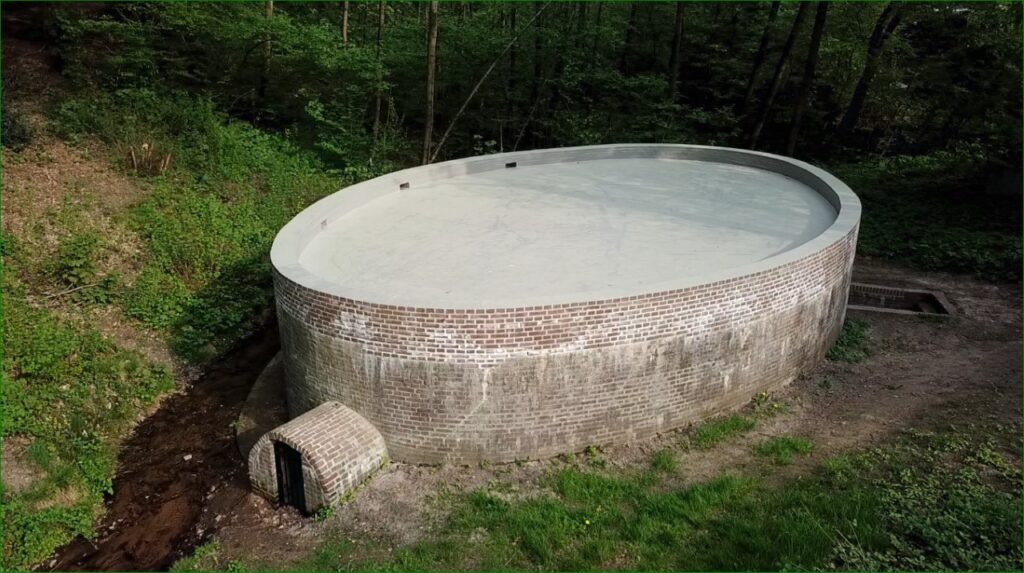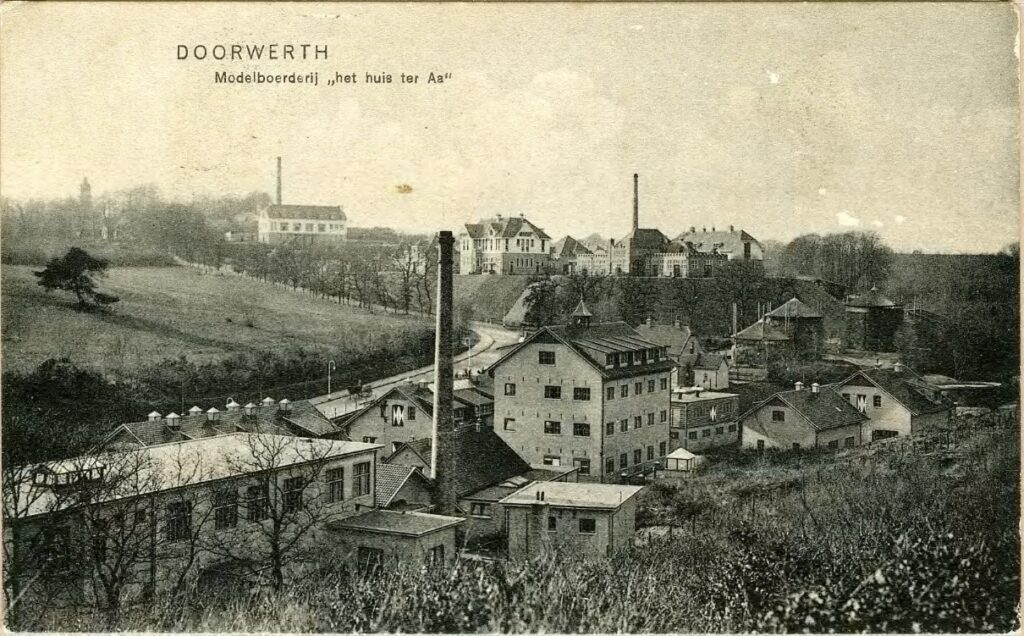
Waterfilterkelder (water filter cistern) along the Seelbeek brook (source De Bekenstichting)
Springwater cisterns and filter of the Veluwe
South of the push moraine The Veluwe, today a nature and recreational area, runs the Seelbeek. Here in 1901 a model dairy farm and factory ‘Huis ter Aa’ was built by entrepreneur Willem Scheffer, next to the Seelbeek brook. To supply the dairy farm and factory with clean water a waterfilter cistern (waterfilterkelder) and water cistern were built next to the Seelbeek in 1908. By lifting a weir water could flow into the cisterns via sand and gravel filters. The model farm never became profitable. The land and buildings were sold to the Rubberfactory Hevea who turned the area into a factory village known as Havea dorp. The waterfilter cistern and water cistern have recently been restored and renovated. The structures are a testimony to the agricultural and industrial heritage of the area.

The model farm and dairy factory Huis ter Aa (source: De Bekenstichting)
Fresh water belt of the Veluwe
For centuries rainwater was stored in the push moraine of the Veluwe hills, creating a sweet water belt with natural springs and brooks. The availability of fresh groundwater has always attracted human settlements and activities. From the middle the ages people started to make use of the running water by building water mills for flower mills. From about 1600 the locals started to exploit the unusual height difference in the terrain (to Dutch standards) even more by digging artificial springs and elevated brooks thus increasing the height difference and water power to drive the watermills for paper mills. The area witnessed an early industrial revolution and attracted other activities such as oil and copper mills. At the same time the springbrooks provided fresh and clean drinking water for the locals. With the introduction of a piped water systems water abstraction increased causing drought intensified by change of land use. In the course of centuries vast forests of deciduous trees made way for heath, sand dunes and coniferous forests increasing evaporation. To prevent brooks from running dry and further decrease of the water table in the Veluwe water belt water from brooks is prevented from running off to main Apeldoorns Kanaal and river IJssel. Instead water from the Klaarbeek is partly pumped back south of the town of Epe and infiltrated north of the town in groundwater recharge ponds.
Rainwater cisterns in the Netherlands
Rainwater cisterns ( waterkelders or regenbakken) were quite common in the Netherlands before the introduction of piped water systems at the turn of the 19th and 20th century. Rainwater was harvested from roofs and connected to underground storage spaces varying in size of a well or a complete basement. Rainwater cisterns of wells were common at farms as well as in cities. Well to do citizens and commercial enterprices such as beer brewers were able and lucky enough to built their own rainwater cisterns and provide for themselves. Most city dwellers, however had no other choice but to obtain their water from polluted wells, ditches. ponds and rivers. Here churches and the city counsels stepped in. Most public buildings and churches were equipped with rainwater cisterns for their own and public use. Some almshouses and orphanages boasted waterkelders of considerable size. Often bequeathed by rich citizens. Read more about rainwater harvesting and water cisterns in the Netherlands.
©Suzanne Loen / LILA Living Landscapes
Published 8 July, 2019